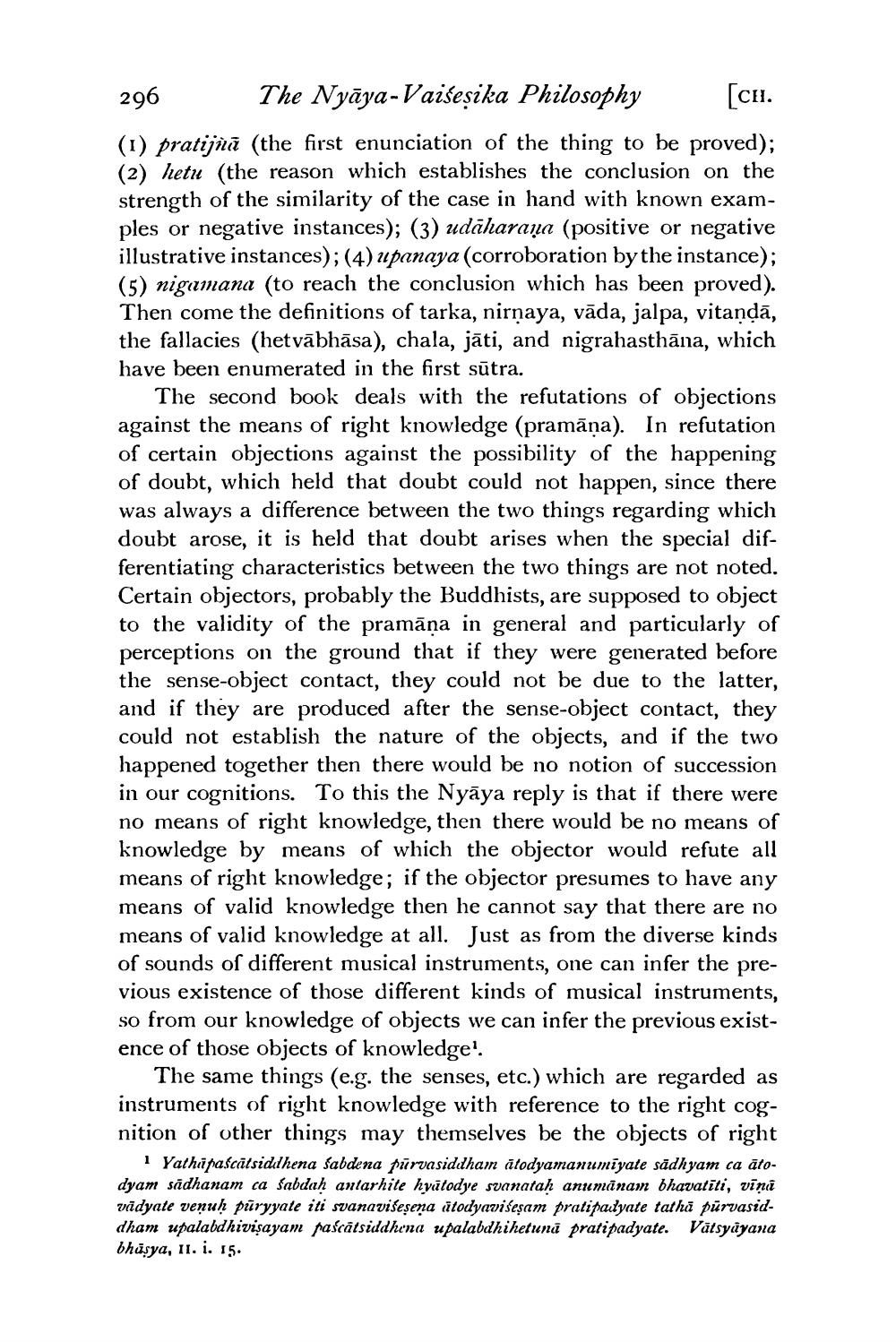________________
296 The Nyāya-Vaiseșika Philosophy [cu. (1) pratijñā (the first enunciation of the thing to be proved); (2) hetu (the reason which establishes the conclusion on the strength of the similarity of the case in hand with known examples or negative instances); (3) udāharana (positive or negative illustrative instances); (4) upanaya (corroboration by the instance); (5) nigamana (to reach the conclusion which has been proved). Then come the definitions of tarka, nirnaya, vāda, jalpa, vitandā, the fallacies (hetvābhāsa), chala, jāti, and nigrahasthāna, which have been enumerated in the first sūtra.
The second book deals with the refutations of objections against the means of right knowledge (pramāna). In refutation of certain objections against the possibility of the happening of doubt, which held that doubt could not happen, since there was always a difference between the two things regarding which doubt arose, it is held that doubt arises when the special differentiating characteristics between the two things are not noted. Certain objectors, probably the Buddhists, are supposed to object to the validity of the pramāņa in general and particularly of perceptions on the ground that if they were generated before the sense-object contact, they could not be due to the latter, and if they are produced after the sense-object contact, they could not establish the nature of the objects, and if the two happened together then there would be no notion of succession in our cognitions. To this the Nyāya reply is that if there were no means of right knowledge, then there would be no means of knowledge by means of which the objector would refute all means of right knowledge; if the objector presumes to have any means of valid knowledge then he cannot say that there are no means of valid knowledge at all. Just as from the diverse kinds of sounds of different musical instruments, one can infer the previous existence of those different kinds of musical instruments, so from our knowledge of objects we can infer the previous existence of those objects of knowledge!
The same things (e.g. the senses, etc.) which are regarded as instruments of right knowledge with reference to the right cognition of other things may themselves be the objects of right
1 Yathipafcätsidilhena fabdena pūrvasiddham ätodyamanumīyate sådhyam ca ātodyam sādhanam ca sabdah antarhite hyūtodye svanatah anumānam bhavatiti, vīņa vādyate venuh pūryyate iti svanavišesena itodyavisesam pratipalyate tathā purvasiddham upalabdhivişayam pascätsiddhena upalabdhihetunā pratipadyate. Vätsyâyana bhāsya, II. i. 15.




